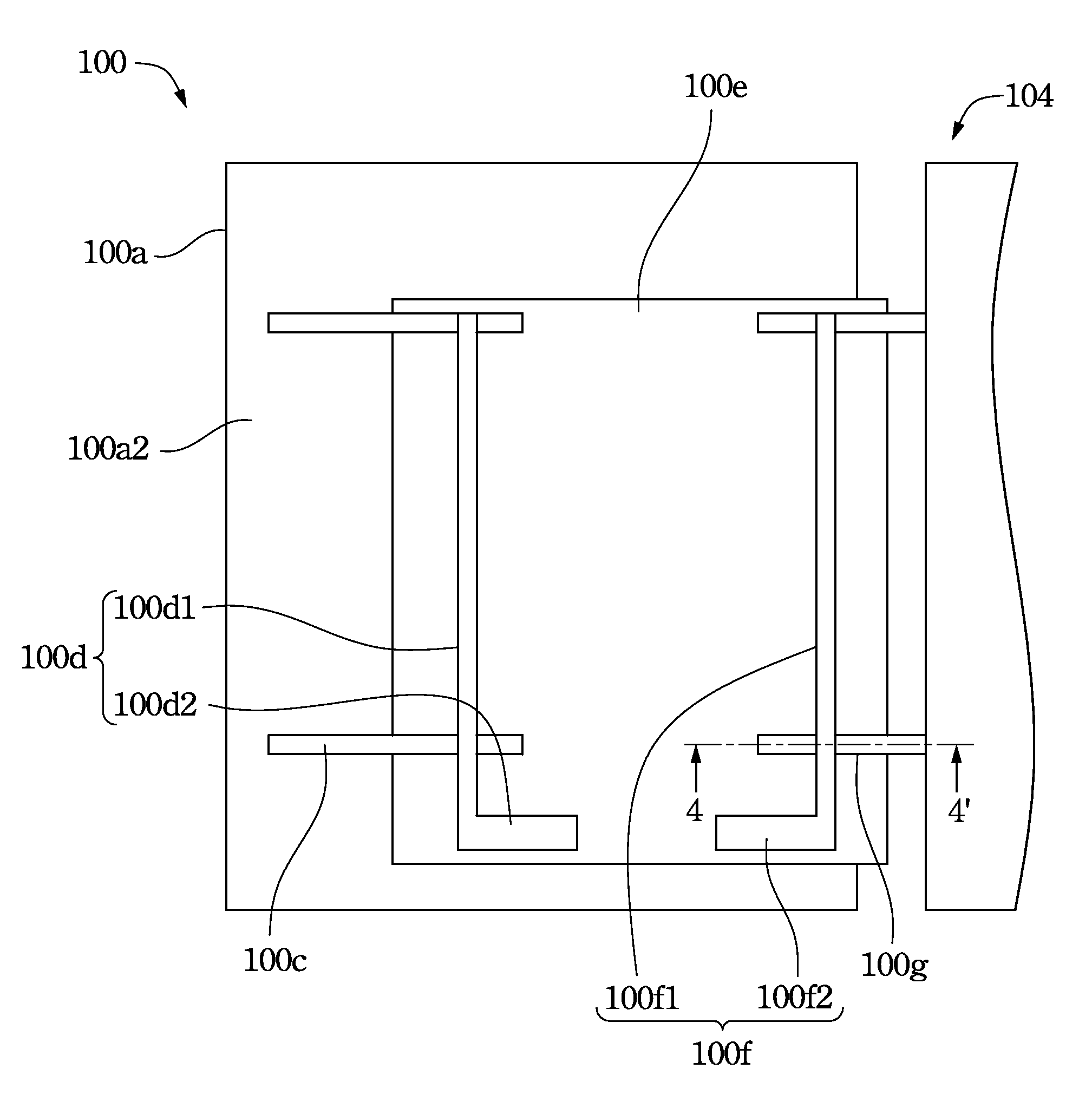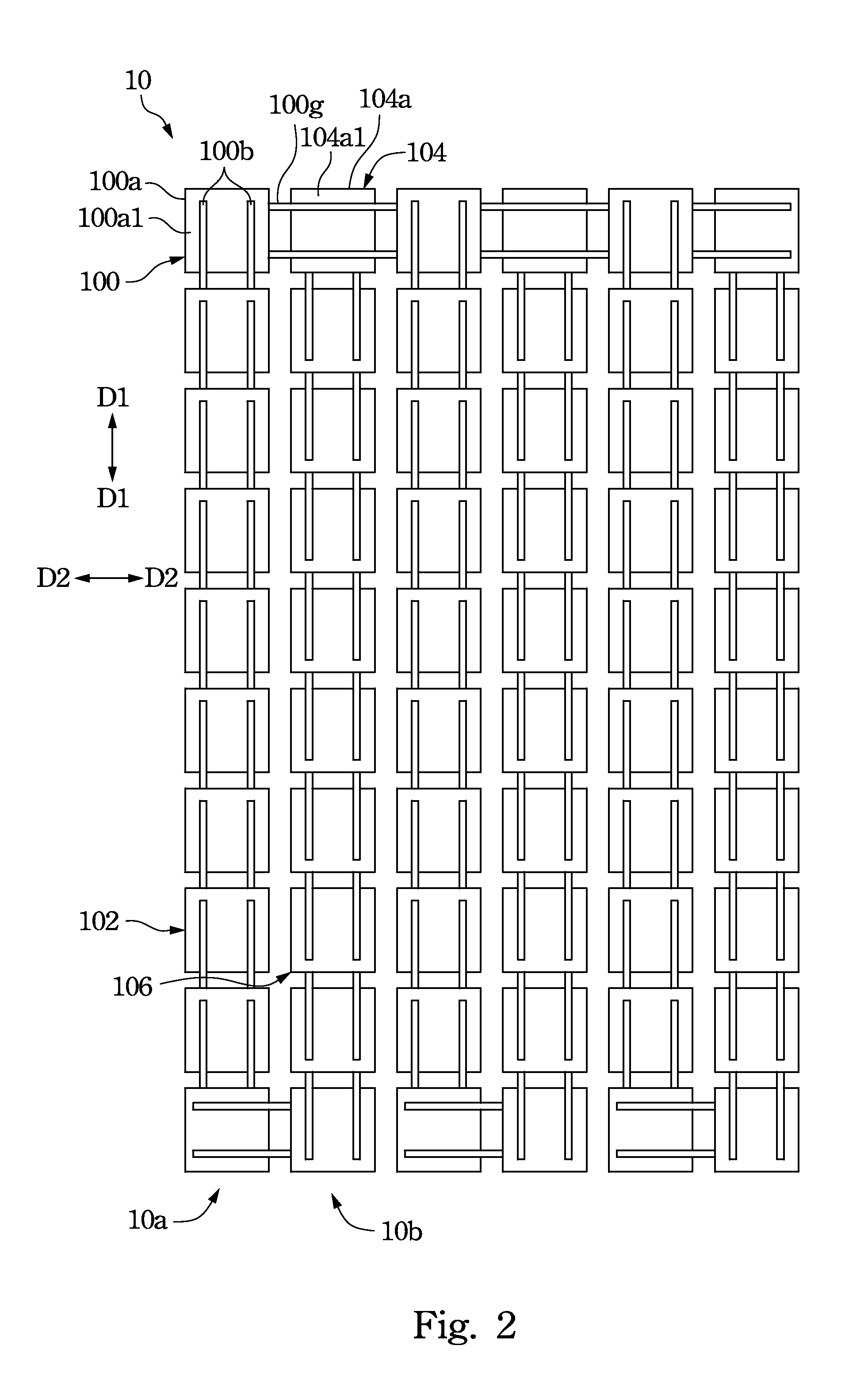Bridging solar cell and solar energy system
a solar cell and solar energy technology, applied in the field of bridging solar cells and solar energy systems, can solve the problems of increasing the cost of solar energy systems, adversely affecting energy loss, increasing the power loss and material costs of the whole solar energy system, etc., and achieves the reduction of the total length of the used bussing ribbon in the solar cell module, the effect of improving the bridging solar cell
- Summary
- Abstract
- Description
- Claims
- Application Information
AI Technical Summary
Benefits of technology
Problems solved by technology
Method used
Image
Examples
Embodiment Construction
[0029]Reference will now be made in detail to the present embodiments of the disclosure, examples of which are illustrated in the accompanying drawings. Wherever possible, the same reference numbers are used in the drawings and the description to refer to the same or like parts.
[0030]An improved solar energy system is provided. Particularly, the direction along which two sets of bus bar electrodes are disposed on a back surface of a bridging solar cell is different from the direction along which bus bar electrodes are disposed on a front surface of the bridging solar cell (e.g., the direction along which the sets of bus bar electrodes are disposed on the back surface of a bridging solar cell is perpendicular to the direction along which the bus bar electrodes are disposed on the front surface of the bridging solar cell). One set of bus bar electrodes on the back surface of a bridging solar cell of a solar cell string of a solar cell module can be directly extended onto a front surfa...
PUM
 Login to View More
Login to View More Abstract
Description
Claims
Application Information
 Login to View More
Login to View More - R&D
- Intellectual Property
- Life Sciences
- Materials
- Tech Scout
- Unparalleled Data Quality
- Higher Quality Content
- 60% Fewer Hallucinations
Browse by: Latest US Patents, China's latest patents, Technical Efficacy Thesaurus, Application Domain, Technology Topic, Popular Technical Reports.
© 2025 PatSnap. All rights reserved.Legal|Privacy policy|Modern Slavery Act Transparency Statement|Sitemap|About US| Contact US: help@patsnap.com



